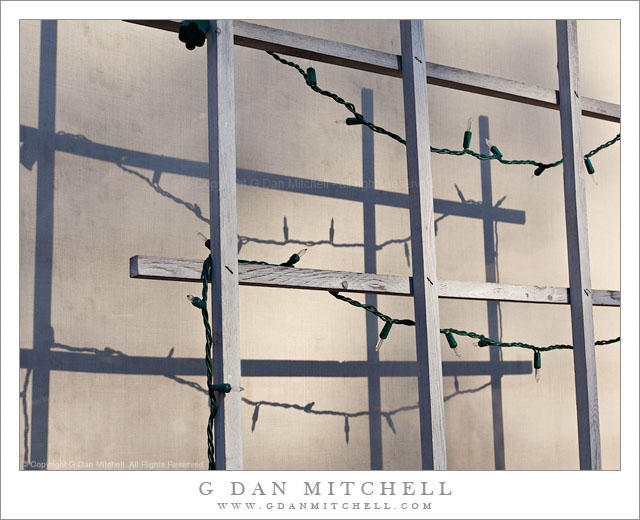Holiday Lights, Shadows. San Jose, California. December 28, 2011. © Copyright 2011 G Dan Mitchell – all rights reserved.
Late afternoon light on holiday lights on a trellis casts shadows on a cloth backdrop.
For some reason, each year around this time it occurs to me to simply walk out my front door and wander around making photographs more or less in my neighborhood. It is an interesting experience that I think every photographer should try. The first time I tried this locally I “saw” things that I had not noticed during decades living in the area. In addition, looking for things to photograph in what might seem like an unlikely location serves to “tune up” my ability to see, and it helps me renew my ability to look past the obvious to find different subjects and different ways to look at them.
At one point on this “photo walk,” I wandered through a parking lot behind some shops. I photographed the back of a building that had an interesting shadow from an exterior staircase and around which interior furniture was arranged… outside. Then as I walked back across the parking lot I happened to see this trellis covered with strings of holiday lights, catching the warm late-afternoon sun and casting shadows on a sheet of canvas hung behind it.
G Dan Mitchell is a California photographer whose subjects include the Pacific coast, redwood forests, central California oak/grasslands, the Sierra Nevada, California deserts, urban landscapes, night photography, and more.
Blog | About | Flickr | Twitter | Facebook | Google+ | 500px.com | LinkedIn | Email
Text, photographs, and other media are © Copyright G Dan Mitchell (or others when indicated) and are not in the public domain and may not be used on websites, blogs, or in other media without advance permission from G Dan Mitchell.


